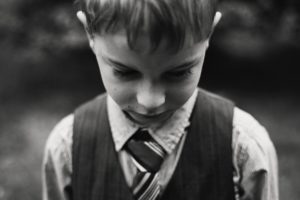(Ned’s industrial comparison between industry and government)
There may be no single right answer
to the problems of Child Protective Services
but there are many better answers
KARA’s friend Ned’s observations on institutional self-destructive decisions & habits:
One can visualize a pretty good analogy in the automobile safety context. Let’s imagine a government that controls (1) automobile safety standards, (2) the state inspection for compliance with automobile safety standards (3) the automobile repair industry, all within the same department, and all done in official secrecy so as to protect the privacy of would-be drivers.
And let’s also suppose that the people who drive automobiles are, 98% of them, poor and very young people, who have no effective political voice.
The stricter the safety standards, the more workers will be needed to enforce them. The more employees, the higher the pay and prestige of the bureaucrats who administer the agency and greater perceived value of the organization.
Let’s suppose we are talking not about child welfare, the bureaucratic institution, but about “CW,” an accursed, nearly immobile brand of automobile. The CW has nearly cornered the market, but it doesn’t go anywhere. As they say in the UK, it “isn’t fit for purpose.”
You point to fatal defects in the CW: its gas tank holds only one cup of gasoline, it lacks both headlights and windshield wipers. It can’t go anywhere when it’s raining, which is much of the time.
The CW, I say, has no gearshift, and the engine is mounted in a way that can only drive the vehicle backwards. And it has no rear window and no rear-view mirror, so to the extent one can get it to go anywhere, it goes backwards blindly, creating havoc. To get any benefit from the device, one would have to repair both sets of defects: provide headlights, provide windshield wipers, but also provide a gearshift so that the vehicle can go forward as well as backward.
In child welfare, one set of defects is seldom mentioned. I think it’s important to see and deal with it.
In the world of the real-life child welfare system, the second set of defects, I suggest, is the conflicts of interest built into the system.
The people running child welfare departments have less than perfect vision when they assess the harms of leaving children to suffer in the homes of seriously inadequate or malevolent parents, but they also have near blindness when it comes to assessing the harms imposed by a childhood of shuffling among inadequate foster parents and the impersonal cruelties of institutional care.
Until there is institutional transparency and
meaningful metrics to gauge policy success and failure,
we will never know what works and what doesn’t.
This is destroying faith in our institutions and producing
what the institution was designed to stop.
Change won’t come without more informed Legislators.
Share this article on social media.
Call or email your State Representative
It makes a difference.
Who represents me in the legislature?|Contact state house members|Contact state senators|Contact your member of congress| U.S. (National)
INVISIBLECHILDREN – KARA (KIDS AT RISK ACTION
“What we do to our children, they will do to our society”
(Pliny the Elder, 2000 years ago)
KIDS AT RISK NONPROFIT EIN: 510570258
Public Service Announcement( 30 Second)








